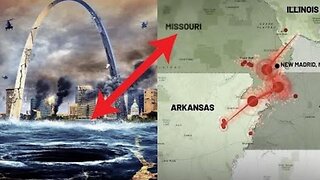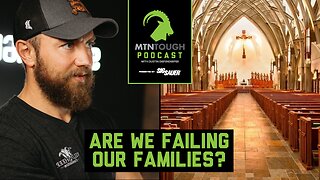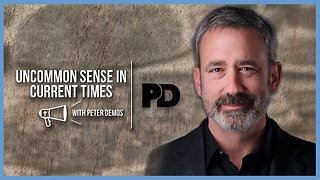Skeletons in the Cupboard - The Redheads (Ep 1/3) - New Zealand (2015)
New Zealand - Skeletons in the Cupboard, Ep.1: The Redheads (2015) [CC] - presents the denied history of the early Patuparaiaehe, the Turehu, the Urekehu, and peace loving red or golden-haired, green- eyed early inhabitants of New AZ— the Ngati Hotu and the Waitaha
-------
Mike Butler: Disinterest in pre-Maori history stuns
Official disinterest in pre-Maori New Zealand history stunned Australian-based researchers Peter Marsh and Gabi Plumm in Part 1 of their new documentary series titled Skeletons in the Cupboard.
Episode 1 The Redheads assembles evidence that Aryans from India migrated to the islands of the Pacific, including New Zealand.
The idea is not new. Edward Tregear's 1885 book The Aryan Maori had the same suggestion at a time when ideas about Aryan (or Caucasian) migrations became popular and were applied to New Zealand.
Mainstream historians like Richard Hill, Vincent O'Malley, and the late Michael King, dismiss the theories as lacking evidence, not bearing scrutiny, wild speculation, racist, or seeking to discredit Waitangi Tribunal claims.
Substantial evidence collected in 1988 that showed human occupation of New Zealand pre-dated Maori occupation by thousands of years was hidden in National Archives for 75 years. This includes carbon dating collected by 37 government-funded archaeologists in a one-year survey of stone structures in the Waipoua Forest near Dargaville.
Plumm interviewed one of those archaeologists, Noel Hilliam, who said that the initial dating showed the structures went back to 2225BC, which is about 3150 years before Maori history began in New Zealand.
Why the cover-up? Hilliam said: “The Maori guy in charge of the Waipoua survey closed the operation down the day after the initial dating came through”.
The survey was deposited at National Archives in Wellington with a note requiring approval of the Te Roroa-Waipoua Achaeological Advisory Committee or other appropriate Te Roroa authority for release of any of the data.
There was a significant noticeable change in Maori culture after they arrived in New Zealand 800 years ago, Plumm said.
“They built planked houses with decorative facades, used single-hulled canoes instead of outriggers, fashioned terraced village sites with amphitheatres, and created complex art forms not seen in the Pacific. What made them change?” Plumm said.
New Zealand was inhabited when the first Polynesian canoes arrived, according to Maori oral tradition, which includes accounts of blond-haired, green-eyed flute-playing small people, the Patupaiarehe, as well as red-haired giants.
Plumm showed photos of skeletons in coffins less than 1.5-metres long.
Hilliam obtained DNA analysis of material found in the caves where the skeletons in coffins were located. The forensic pathologist in the United Kingdom who did the analysis confirmed they had the DNA identical to that of ancient Celtic people from Wales, and were 3500 years old.
Where did the light-skinned, blond-haired, green-eyed people go? They are still among us. Monica Matumua, who grew up at Rena on the Wanganui River 27km from Taumarunui, has a family tradition that their ancestors 165 generations ago migrated from India to escape a war.
If a generation is 20 years, 165 generations goes back 3300 years, to 1285BC, which coincides with the end of the Indus Valley civilisation in northwest India.
Matumua says her ancestors sailed across the Atlantic to Central America, relocated to South America, sailed to Polynesia, and sailed further to New Zealand 74 generations ago around 535 CE, landing in the Bay of Islands near Russell.
The name Ngati Hotu was given to her ancestors with the arrival in New Zealand of Kupe, the supposed first Polynesian to arrive in New Zealand from 925 to 1215 CE.
Matumua was stunned to see that Waitangi Tribunal member and historian Angela Ballara declare that all Ngati Hotu had been wiped out. Matumua told her story to the tribunal as part of a claim on behalf of Ngati Hotu.
In 2013 she submitted a sample of saliva to the National Geographic Genographic Survey, which aims to map historical human migration patterns by collecting and analyzing DNA samples from around the world
Results published in Elocal in February of 2014 showed the first reference population matching Matumua’s DNA was based on samples collected from the Kinh ethnic group living in Vietnam. Her second reference population is in Puerto Rico.
Her haplogroup, which includes those people with similar DNA results and where some of her more recent ancestors settled, showed that parts of South America and New Zealand were very closely related to her DNA code, with Hawaii particularly close.
Marsh and Plumm also talked to moko artist Jason Phillips, Ancient Celtic New Zealand author Martin Doutre, Barry Brailsford, who studied the oral history of the Waitaha, and Secret Land series writer Gary Cook.
They referred to an incident in Awanui in the Far North by an excavator driver who found 2000 skeletons hunched in a fetal postion, bound, and buried.
The driver asked the Auckland Museum for advice and was told the museum could do nothing because the local tribe had no interest in these remains because they were not their people. The remains were not investigated.
The 60-minute documentary that was released in November of 2015, the first part of a series, is quality cinematography and sound fronted by the British-born writer of short stories and a children’s book and filmed by a Fiji-born Australian.
Being outsiders and independent of state funding, Marsh and Plumm do not have to pick a side in New Zealand’s culture war.
Skeletons in the Cupboard shows that our past is much more interesting than you ever imagined.
Sources
Skeletons in the Cupboard. Episode 1 The Redheads. https://www.youtube.com/watch?feature=player_embedded&v=2z6PlYiQSTs
Final Frontier to a forgotten people, Elocal, http://www.elocal.co.nz/View_Article~Id~289~title~ELocaL%20COMMUNITY%20MAGAZINE%20-%20View%20Articles.html
Lawyers flock for treaty wrangle, NZ Herald November 17, 2006. http://www.nzherald.co.nz/nz/news/article.cfm?c_id=1&objectid=10411291
DNA to Rock the nation Part 1, Elocal, January 2014. http://www.elocal.co.nz/View_Article~Id~1076~title~DNA_to_Rock_the_nation_Part_1.html
DNA to Rock the nation Part 2, Elocal, February 2014. http://www.elocal.co.nz/View_Article~Id~1108~title~Changing_Our_NZ_History._DNA_to_Rock_the_Nation_Part_2.html
Labels: Angela Ballara, Barry Brailsford, Gabi Plumm, Gary Cook, Jason Phillips, Martin Doutre, Michael King, Mike Butler, Monica Matumua, Ngati Hotu, Noel Hilliam, Peter Marsh, Richard Hill, Vincent O'Malley
SOURCE OF ARTICLE: https://breakingviewsnz.blogspot.com/2016/01/mike-butler-disinterest-in-pre-maori.html
VIDEO SOURCE: https://old.bitchute.com/video/VR3a1X5a0693/
-
 16:23
16:23
Truths Unlimited
9 hours agoWARNING! EARTHQUAKE DRILLS Happening Now! Not a Matter 'IF' but 'WHEN'! - Madrid Fault Line
966 -
 14:10
14:10
The Gun Collective
15 hours agoALL THE NEW GUNS - TGC News!
10.4K8 -
 1:11:03
1:11:03
MTNTOUGH Fitness Lab
1 day agoThe EROSION of Manhood: The Feminization of the Church | MTNT POD #87
7.85K2 -
 8:25
8:25
Adam Does Movies
19 hours ago $1.32 earnedLate Night With The Devil Movie Review - A Great Halloween Treat!
7.77K -
 9:14
9:14
Melonie Mac
19 hours agoSonic X Shadow Generations Censored for Modern Audiences
8.68K10 -
 45:02
45:02
Uncommon Sense In Current Times
18 hours ago $1.24 earned"From Circus to Substance: Transforming Presidential Debates!"
13.3K2 -
 2:44:55
2:44:55
Price of Reason
15 hours agoDonald Trump SET for Joe Rogan! Disney EMBARRASSED Again! Mass Effect Director ATTACKS Customers!
35.7K22 -
 2:25:58
2:25:58
Laura Loomer
11 hours agoEP85: MAGADonald's: Kamala Gets Fried Over McDonald's Employment Lie
107K72 -
 4:05:52
4:05:52
Rance's Gaming Corner
13 hours agoTrump to appear? LA Times declines? Its the Final Count Down...
73.8K14 -
 1:48:27
1:48:27
Kim Iversen
15 hours agoSHOCKING CONNECTION: Was the Ukrainian Azov Battalion Behind The Trump Assassination Attempts?
114K191